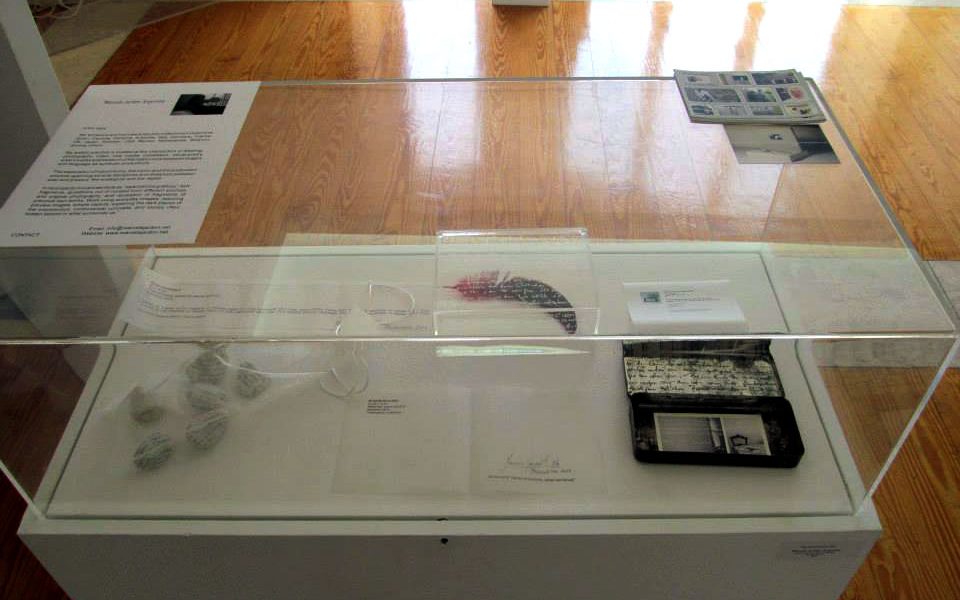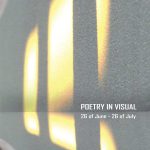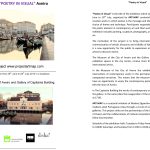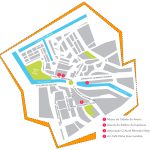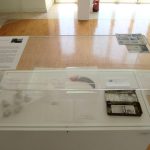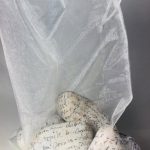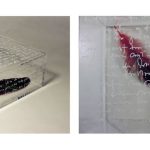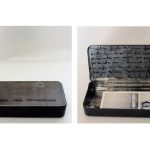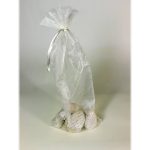POETRY IN VISUAL – Małgorzata Dawidek
Concept
The exhibition Art-Map Aveiro 2015 intends to bring together artworks which involve the concept of image, text and auto-reflection. Nowadays, we often have the situation where the idea of Poiesis is disregarded by the idea of contemporary. The urgency of contemporary can be contrasted with the poetical that is also uttered by the “everyday” around us. Consummation of technological progress is presented to us as a matter of an unavoidable contemplation. In the condition of ubiquity of the cult of technology, information and consummation, actuality of the concept of Poiesis will need to be revoked.
In this exhibition the theme of Poetry in Visual will be highlighted through the various artistic works exploring narratives of the image and shapes of the text. Modern art theories inspire a line which doesn’t care about poetical element in practice and interpretation. . Art-Map seeks to move beyond that discourse, proposing the viewer material to perceive the contemporary through Poiesis.
But how can we delineate Poiesis when it is seemingly synonym for artistic expression? The essence of Poiesis is where the everyday has slowed to its “imperceptible Vibration”1; Exhibition convention will inspire us to ask how we can engage Poiesis in the condition of everyday, when we are exposed to the emerging amalgamation “between industry, arts and science”.2
A Reasonable question will be: what does constitute the everyday?
Our experiences of everyday are regulated by “the emerging technological futures” in which the immediate impersonal exchange and consummation seems meaningful. “The space and time needed for us to discern the relevance of this informational excess is collapsing and dissolving our lived experience.”3
Data exchange is like a global force that is absorptive and oblivious; not people consume the information but the information consumes the people. At the bottom of the
1 Thomas, Paul, (2007), Stillness Contemplation and Pattern Recognition, The 3rd Biennale of Electronic Arts Perth, Western Australia 10 – 23 September;
2 ibid
3 ibid
T
data there is submerged Poiesis. “Technologies constitute saturate and penetrate us with transmissions of data”4 turning ridiculous the idea of poetical contemplation. Poiesis needs perception, whereas technology and information insist on reception. Multiple devices and networks connect any step of the individual: private is shared and communicated to deceive the loneliness.5 Everyday TV, Internet, blogs, chats, news provide a fake sensation of community and belonging, yet if for a moment it stops we experience an overwhelming emptiness.
Art gives us a moment to discover other possibilities. It gives us “emotional space and time for reflection and contemplation”. One of the concepts which stand behind the theme of the exhibition poetry in visual is to create such “emotional space”. Openness for Poiesis fulfils a personal space, endows it with air and imagination, even if doesn’t bring the information, it brings the sensation of the meaningful presence6. Through Poiesis, the self has a present and as has a subject that enriches from what is exposed to him/her, that self can be explored.
The project examines whether the principle of the informative value predominates in art? or whether the artist is capable of turning explicit the poetry dispersed in the “fiction of contemporary”.7
The artist’s special capacity is of seeing, hearing, reflecting on visual and verbal significations and converting these experiences as artworks; the artist’s special capacity is of comprehension and poetical description of the cultural environment in which he/she finds himself.
Artists understand and explore the relationship between self and contemporary, constructing an image of it from the reality around them.8 This relation resolves as an art object that reveals the inherent visuality of language and the informativeness of the image.
Technologically mediated or handcrafted metaphorical descriptions of reality made by artists subvert our
4 ibid
5 Adorno, Theodor and Max Horkheimer, Dialectic of Enlightenment, Trans, John Cumming, London: Verso, 1972, (The Culture Industry: Enlightenment as Mass Deception)
6 Schröter, Jens (2010), “The Politics Of Intermediary“ Acta Univ. Sapientiae, Film Andmediastudies, 107–124;
7 Osborne, Peter, (2013), Anywhere Or Not At All. Philosophy of Contemporary Art, Verso, London;
8 Kosuth, Joseph (1975), “Artist as Anthropologist”, (extracts) reprinted in The Everyday: Documents of Contemporary Art, Stephen Johnstone (ed.), Cambridge, Mass. : MIT Press, 2008;
“associative mechanism” by linking dispersed ideas or separating complex concepts into elementary parts.9 Exactly on this edge of losing control over the habitual associative patterns resides the capacity to perceive Poiesis.
Shaping a text, a fragment or a word into image or object, “in this way the transformation of data can be seen to have the sum total of all its parts and is understood to form a whole”10. When the verbal code is revived, transformed into visual objects, we can translate them, and comprehend the issues which slide away from us in the everyday.
Translation of the image into text is a search for the other properties of the image. The visual is rendered into the verbal body. The image is granted with the unexpected immateriality of the speech and the art object itself obtains a fluency of communication. The text seen is immediately spoken inside us, and when it is spoken it is immediately heard. In the transgression of the image between seen, spoken, and heard lays the point where the poiesis supervises our perception.
By developing the theme of Poetry in Visual this project bears the hope to serve as an inspiration of the artistic works and to provoke the audience to reflect upon them.
9 Crimp, Douglas (1977), “Pictures”, Artists Space;
10Thomas, Paul, (2007), Stillness Contemplation and Pattern Recognition,The 3rd Biennale of Electronic Arts Perth, Western Australia 10 – 23 September;
Visitas: 0
